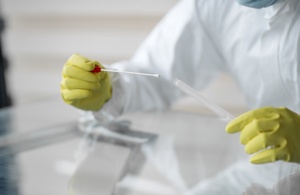The Evolution of Psychiatric Assessment Tools Over the Decades

Doctor taking a swab sample.
Introduction
The field of psychiatry has witnessed a remarkable evolution over the past decades, especially in the realm of assessment tools. These tools are vital in diagnosing, understanding, and treating mental health disorders. From simple questionnaires to sophisticated neuroimaging, the journey of psychiatric assessment tools reflects the broader progress in mental health understanding and care.
The Early Years: The Birth of Standardized Tools
The 1950s and 1960s: The First Standardized Tests
The earliest psychiatric assessments were rudimentary, often relying on unstructured clinical interviews. The 1950s and 1960s saw the development of the first standardized tools, such as the Minnesota Multiphasic Personality Inventory (MMPI) and the Rorschach inkblot test. These tools aimed to provide a more objective measure of mental health, though they were limited by the psychological understanding of the time.
The 1970s: The DSM Revolution
Standardization of Diagnosis
The publication of the DSM-III (Diagnostic and Statistical Manual of Mental Disorders, Third Edition) in the 1980s was a pivotal moment in psychiatric assessment. This manual introduced more standardized diagnostic criteria for mental health disorders, leading to the development of structured interview tools aligned with these criteria.
The 1980s and 1990s: The Rise of Structured Interviews
Improving Diagnostic Accuracy
Structured diagnostic interviews like the Structured Clinical Interview for DSM (SCID) became popular in the 1980s and 1990s. These interviews provided a more systematic approach to diagnosis, reducing variability between different clinicians’ assessments.
The 2000s: Integration of Technology
Computerized Assessments
With the advent of digital technology, the 2000s saw the introduction of computerized assessments. Tools like the Beck Depression Inventory began to be offered in digital formats, allowing for easier administration and scoring.
Online Self-Assessments
The internet era brought psychiatric self-assessment tools online, increasing accessibility for individuals to evaluate their mental health privately.
The 2010s: The Age of Apps and Big Data
Mobile Health Applications
The proliferation of smartphones led to the development of mental health apps, offering self-assessment tools directly to users’ devices. These apps not only provide immediate feedback but also track mental health over time.
Big Data and Predictive Analytics
The rise of big data analytics has enabled the analysis of vast datasets from electronic health records (EHRs), providing insights into mental health trends and aiding in the development of predictive models for psychiatric disorders.
The Present and Future: AI and Neuroimaging
AI and Machine Learning
Artificial Intelligence (AI) and Machine Learning (ML) are the newest frontiers in psychiatric assessment. These technologies are being used to analyze speech patterns, facial expressions, and writing to detect mental health issues, offering a level of insight previously unimaginable.
Advanced Neuroimaging Techniques
Techniques like functional MRI (fMRI) and PET scans are providing a deeper understanding of the brain’s functioning in various mental health disorders, paving the way for more targeted and effective treatments.
Challenges and Ethical Considerations
Balancing Technology and Human Touch
As assessment tools become more technologically advanced, there is a growing need to balance these innovations with the human element of psychiatric care. Ensuring these tools are used ethically and empathetically remains a crucial consideration.
Accessibility and Cultural Sensitivity
Ensuring these advanced tools are accessible to diverse populations and sensitive to cultural differences is another ongoing challenge in their development and deployment.
Conclusion
The evolution of psychiatric assessment tools over the decades mirrors the growth and change in our understanding of mental health. From simple questionnaires to AI-driven analyses, these tools have come a long way in helping diagnose and treat mental health disorders more effectively. As technology continues to advance, it holds the promise of even more refined and insightful tools, potentially transforming psychiatric care in ways we are just beginning to understand.





